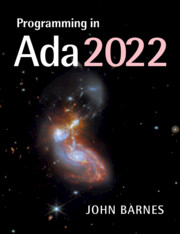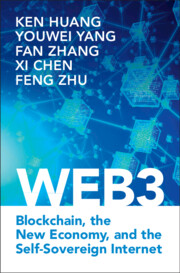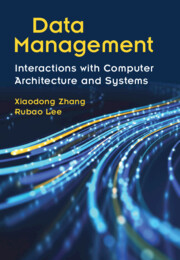Refine search
Actions for selected content:
48569 results in Computer Science
Understanding to intervene: The codesign of text classifiers with peace practitioners
- Part of
-
- Journal:
- Data & Policy / Volume 6 / 2024
- Published online by Cambridge University Press:
- 27 November 2024, e54
-
- Article
-
- You have access
- Open access
- HTML
- Export citation
The reference system in product generation engineering: structuring reference system elements for advanced systems engineering based on the system triple
-
- Journal:
- Design Science / Volume 10 / 2024
- Published online by Cambridge University Press:
- 27 November 2024, e35
-
- Article
-
- You have access
- Open access
- HTML
- Export citation
Convolutional kernel-based classification of industrial alarm floods
- Part of
-
- Journal:
- Data-Centric Engineering / Volume 5 / 2024
- Published online by Cambridge University Press:
- 27 November 2024, e30
-
- Article
-
- You have access
- Open access
- HTML
- Export citation
On the study of the cumulative residual extropy of mixed used systems and their complexity
- Part of
-
- Journal:
- Probability in the Engineering and Informational Sciences / Volume 39 / Issue 1 / January 2025
- Published online by Cambridge University Press:
- 26 November 2024, pp. 122-140
-
- Article
-
- You have access
- Open access
- HTML
- Export citation
Optimal mixing via tensorization for random independent sets on arbitrary trees
- Part of
-
- Journal:
- Combinatorics, Probability and Computing / Volume 34 / Issue 2 / March 2025
- Published online by Cambridge University Press:
- 26 November 2024, pp. 259-275
-
- Article
- Export citation
The inconvenient truth of ground truth errors in automotive datasets and DNN-based detection
- Part of
-
- Journal:
- Data-Centric Engineering / Volume 5 / 2024
- Published online by Cambridge University Press:
- 25 November 2024, e34
-
- Article
-
- You have access
- Open access
- HTML
- Export citation
A deep operator network for Bayesian parameter identification of self-oscillators
-
- Journal:
- Data-Centric Engineering / Volume 5 / 2024
- Published online by Cambridge University Press:
- 25 November 2024, e35
-
- Article
-
- You have access
- Open access
- HTML
- Export citation
AI as a constituted system: accountability lessons from an LLM experiment
- Part of
-
- Journal:
- Data & Policy / Volume 6 / 2024
- Published online by Cambridge University Press:
- 25 November 2024, e57
-
- Article
-
- You have access
- Open access
- HTML
- Export citation
Exploring the contributions of open data intermediaries for a sustainable open data ecosystem
- Part of
-
- Journal:
- Data & Policy / Volume 6 / 2024
- Published online by Cambridge University Press:
- 25 November 2024, e56
-
- Article
-
- You have access
- Open access
- HTML
- Export citation
Identifying stakeholder motivations in normative AI governance: a systematic literature review for research guidance
- Part of
-
- Journal:
- Data & Policy / Volume 6 / 2024
- Published online by Cambridge University Press:
- 25 November 2024, e58
-
- Article
-
- You have access
- Open access
- HTML
- Export citation
Preface – MSCS
-
- Journal:
- Mathematical Structures in Computer Science / Volume 34 / Issue 7 / August 2024
- Published online by Cambridge University Press:
- 22 November 2024, p. 551
-
- Article
-
- You have access
- HTML
- Export citation
Design thinking: catalysing change in the educational ecosystem – a framework for future challenges
-
- Journal:
- Design Science / Volume 10 / 2024
- Published online by Cambridge University Press:
- 22 November 2024, e34
-
- Article
-
- You have access
- Open access
- HTML
- Export citation
Should we communicate with the dead to assuage our grief? An Ubuntu perspective on using griefbots
- Part of
-
- Journal:
- Data & Policy / Volume 6 / 2024
- Published online by Cambridge University Press:
- 22 November 2024, e55
-
- Article
-
- You have access
- Open access
- HTML
- Export citation
Elementary quantum recursion schemes that capture quantum polylogarithmic-time computability of quantum functions
-
- Journal:
- Mathematical Structures in Computer Science / Volume 34 / Issue 7 / August 2024
- Published online by Cambridge University Press:
- 22 November 2024, pp. 710-745
-
- Article
- Export citation
Optimal Matching for Sharing and Linearity Analysis
-
- Journal:
- Theory and Practice of Logic Programming / Volume 24 / Issue 5 / September 2024
- Published online by Cambridge University Press:
- 22 November 2024, pp. 1051-1077
-
- Article
-
- You have access
- Open access
- HTML
- Export citation
A high-accuracy ionospheric foF2 critical frequency forecast using long short-term memory LSTM
-
- Journal:
- Environmental Data Science / Volume 3 / 2024
- Published online by Cambridge University Press:
- 22 November 2024, e26
-
- Article
-
- You have access
- Open access
- HTML
- Export citation

Programming in Ada 2022
-
- Published online:
- 21 November 2024
- Print publication:
- 28 November 2024

Web3
- Blockchain, the New Economy, and the Self-Sovereign Internet
-
- Published online:
- 21 November 2024
- Print publication:
- 21 November 2024

Data Management
- Interactions with Computer Architecture and Systems
-
- Published online:
- 21 November 2024
- Print publication:
- 28 November 2024















